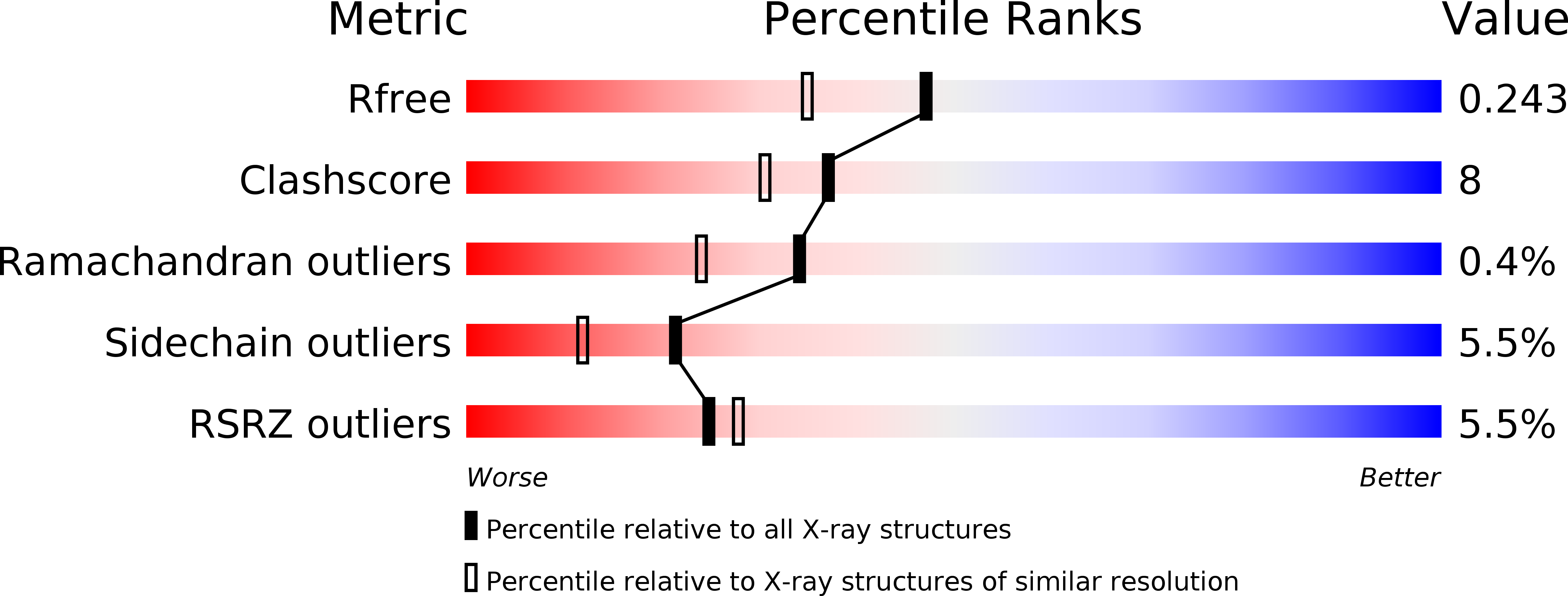The CC1-FHA Tandem as a Central Hub for Controlling the Dimerization and Activation of Kinesin-3 KIF1A
Huo, L., Yue, Y., Ren, J., Yu, J., Liu, J., Yu, Y., Ye, F., Xu, T., Zhang, M., Feng, W.(2012) Structure 20: 1550-1561
- PubMed: 22863567
- DOI: https://doi.org/10.1016/j.str.2012.07.002
- Primary Citation of Related Structures:
4EGX, 4EJQ - PubMed Abstract:
Kinesin-3 KIF1A plays prominent roles in axonal transport and synaptogenesis. KIF1A adopts a monomeric form in vitro but acts as a processive dimer in vivo. The mechanism underlying the motor dimerization is poorly understood. Here, we find that the CC1-FHA tandem of KIF1A exists as a stable dimer. The structure of CC1-FHA reveals that the linker between CC1 and FHA unexpectedly forms a β-finger hairpin, which integrates CC1 with FHA assembling a CC1-FHA homodimer. More importantly, dissociation of the CC1-FHA dimer unleashes CC1 and the β-finger, which are both essential for the motor inhibition. Thus, dimerization of the CC1-FHA tandem not only promotes the KIF1A dimer formation but also may trigger the motor activity via sequestering the CC1/β-finger region. The CC1-FHA tandem likely functions as a hub for controlling the dimerization and activation of KIF1A, which may represent a new paradigm for the kinesin regulation shared by other kinesin-3 motors.
Organizational Affiliation:
National Laboratory of Biomacromolecules, Institute of Biophysics, Chinese Academy of Sciences, 15 Datun Road, Beijing 100101, China.














